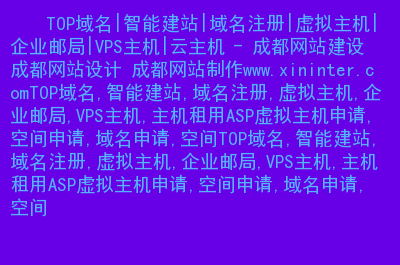互联网保险营销文献(互联网保险营销文献汇编)
- 网站优化
- 2023-01-31
- 45
急求关于网络保险的英文文献!!!
网络保险
Internet Insurance
Network insurance
Net Insurance
保险学 Insurance
;pg=PA350lpg=PA350dq=Net+Insurancesource=webots=2KPcc5u3X0sig=bRLwUXiMe3TPmu-8v1DrVW5G9vghl=en
;pg=PT323lpg=PT323dq=Net+Insurancesource=webots=gVkdB3wlNSsig=pQXWstUk4boO4TcpHZOh4bKJyzYhl=en
;pg=PA189lpg=PA189dq=Net+Insurancesource=webots=dFsvdx1W4fsig=6tPP8qP_A04ViEF7nN2fP7jtc04hl=en
Insurance, in law and economics, is a form of risk management primarily used to hedge against the risk of a contingent loss. Insurance is defined as the equitable transfer of the risk of a loss, from one entity to another, in exchange for a premium. An insurer is a company selling the insurance. The insurance rate is a factor used to determine the amount, called the premium, to be charged for a certain amount of insurance coverage. Risk management, the practice of appraising and controlling risk, has evolved as a discrete field of study and practice.
Principles of insurance
A large number of homogeneous exposure units. The vast majority of insurance policies are provided for individual members of very large classes. Automobile insurance, for example, covered about 175 million automobiles in the United States in 2004.[2] The existence of a large number of homogeneous exposure units allows insurers to benefit from the so-called “law of large numbers,” which in effect states that as the number of exposure units increases, the actual results are increasingly likely to become close to expected results. There are exceptions to this criterion. Lloyd's of London is famous for insuring the life or health of actors, actresses and sports figures. Satellite Launch insurance covers events that are infrequent. Large commercial property policies may insure exceptional properties for which there are no ‘homogeneous’ exposure units. Despite failing on this criterion, many exposures like these are generally considered to be insurable.
Definite Loss. The event that gives rise to the loss that is subject to insurance should, at least in principle, take place at a known time, in a known place, and from a known cause. The classic example is death of an insured on a life insurance policy. Fire, automobile accidents, and worker injuries may all easily meet this criterion. Other types of losses may only be definite in theory. Occupational disease, for instance, may involve prolonged exposure to injurious conditions where no specific time, place or cause is identifiable. Ideally, the time, place and cause of a loss should be clear enough that a reasonable person, with sufficient information, could objectively verify all three elements.
Accidental Loss. The event that constitutes the trigger of a claim should be fortuitous, or at least outside the control of the beneficiary of the insurance. The loss should be ‘pure,’ in the sense that it results from an event for which there is only the opportunity for cost. Events that contain speculative elements, such as ordinary business risks, are generally not considered insurable.
Large Loss. The size of the loss must be meaningful from the perspective of the insured. Insurance premiums need to cover both the expected cost of losses, plus the cost of issuing and administering the policy, adjusting losses, and supplying the capital needed to reasonably assure that the insurer will be able to pay claims. For small losses these latter costs may be several times the size of the expected cost of losses. There is little point in paying such costs unless the protection offered has real value to a buyer.
Affordable Premium. If the likelihood of an insured event is so high, or the cost of the event so large, that the resulting premium is large relative to the amount of protection offered, it is not likely that anyone will buy insurance, even if on offer. Further, as the accounting profession formally recognizes in financial accounting standards, the premium cannot be so large that there is not a reasonable chance of a significant loss to the insurer. If there is no such chance of loss, the transaction may have the form of insurance, but not the substance. (See the U.S. Financial Accounting Standards Board standard number 113)
Calculable Loss. There are two elements that must be at least estimable, if not formally calculable: the probability of loss, and the attendant cost. Probability of loss is generally an empirical exercise, while cost has more to do with the ability of a reasonable person in possession of a copy of the insurance policy and a proof of loss associated with a claim presented under that policy to make a reasonably definite and objective evaluation of the amount of the loss recoverable as a result of the claim.
Limited risk of catastrophically large losses. The essential risk is often aggregation. If the same event can cause losses to numerous policyholders of the same insurer, the ability of that insurer to issue policies becomes constrained, not by factors surrounding the individual characteristics of a given policyholder, but by the factors surrounding the sum of all policyholders so exposed. Typically, insurers prefer to limit their exposure to a loss from a single event to some small portion of their capital base, on the order of 5 percent. Where the loss can be aggregated, or an individual policy could produce exceptionally large claims, the capital constraint will restrict an insurers appetite for additional policyholders. The classic example is earthquake insurance, where the ability of an underwriter to issue a new policy depends on the number and size of the policies that it has already underwritten. Wind insurance in hurricane zones, particularly along coast lines, is another example of this phenomenon. In extreme cases, the aggregation can affect the entire industry, since the combined capital of insurers and reinsurers can be small compared to the needs of potential policyholders in areas exposed to aggregation risk. In commercial fire insurance it is possible to find single properties whose total exposed value is well in excess of any individual insurer’s capital constraint. Such properties are generally shared among several insurers, or are insured by a single insurer who syndicates the risk into the reinsurance market.
[edit] Indemnification
Main article: Indemnity
The technical definition of "indemnity" means to make whole again. There are two types of insurance contracts; 1) an "indemnity" policy and 2) a "pay on behalf" or "on behalf of"[3] policy. The difference is significant on paper, but rarely material in practice.
An "indemnity" policy will never pay claims until the insured has paid out of pocket to some third party; i.e. a visitor to your home slips on a floor that you left wet and sues you for $10,000 and wins. Under an "indemnity" policy the homeowner would have to come up with the $10,000 to pay for the visitors fall and then would be "indemnified" by the insurance carrier for the out of pocket costs (the $10,000)[4].
Under the same situation, a "pay on behalf" policy, the insurance carrier would pay the claim and the insured (the homeowner) would not be out of pocket for anything. Most modern liability insurance is written on the basis of "pay on behalf" language[5].
An entity seeking to transfer risk (an individual, corporation, or association of any type, etc.) becomes the 'insured' party once risk is assumed by an 'insurer', the insuring party, by means of a contract, called an insurance 'policy'. Generally, an insurance contract includes, at a minimum, the following elements: the parties (the insurer, the insured, the beneficiaries), the premium, the period of coverage, the particular loss event covered, the amount of coverage (i.e., the amount to be paid to the insured or beneficiary in the event of a loss), and exclusions (events not covered). An insured is thus said to be "indemnified" against the loss events covered in the policy.
When insured parties experience a loss for a specified peril, the coverage entitles the policyholder to make a 'claim' against the insurer for the covered amount of loss as specified by the policy. The fee paid by the insured to the insurer for assuming the risk is called the 'premium'. Insurance premiums from many insureds are used to fund accounts reserved for later payment of claims—in theory for a relatively few claimants—and for overhead costs. So long as an insurer maintains adequate funds set aside for anticipated losses (i.e., reserves), the remaining margin is an insurer's profit.
[edit] Insurer’s business model
Profit = earned premium + investment income - incurred loss - underwriting expenses.
Insurers make money in two ways: (1) through underwriting, the process by which insurers select the risks to insure and decide how much in premiums to charge for accepting those risks and (2) by investing the premiums they collect from insureds.
The most difficult aspect of the insurance business is the underwriting of policies. Using a wide assortment of data, insurers predict the likelihood that a claim will be made against their policies and price products accordingly. To this end, insurers use actuarial science to quantify the risks they are willing to assume and the premium they will charge to assume them. Data is analyzed to fairly accurately project the rate of future claims based on a given risk. Actuarial science uses statistics and probability to analyze the risks associated with the range of perils covered, and these scientific principles are used to determine an insurer's overall exposure. Upon termination of a given policy, the amount of premium collected and the investment gains thereon minus the amount paid out in claims is the insurer's underwriting profit on that policy. Of course, from the insurer's perspective, some policies are winners (i.e., the insurer pays out less in claims and expenses than it receives in premiums and investment income) and some are losers (i.e., the insurer pays out more in claims and expenses than it receives in premiums and investment income).
An insurer's underwriting performance is measured in its combined ratio. The loss ratio (incurred losses and loss-adjustment expenses divided by net earned premium) is added to the expense ratio (underwriting expenses divided by net premium written) to determine the company's combined ratio. The combined ratio is a reflection of the company's overall underwriting profitability. A combined ratio of less than 100 percent indicates underwriting profitability, while anything over 100 indicates an underwriting loss.
Insurance companies also earn investment profits on “float”. “Float” or available reserve is the amount of money, at hand at any given moment, that an insurer has collected in insurance premiums but has not been paid out in claims. Insurers start investing insurance premiums as soon as they are collected and continue to earn interest on them until claims are paid out.
In the United States, the underwriting loss of property and casualty insurance companies was $142.3 billion in the five years ending 2003. But overall profit for the same period was $68.4 billion, as the result of float. Some insurance industry insiders, most notably Hank Greenberg, do not believe that it is forever possible to sustain a profit from float without an underwriting profit as well, but this opinion is not universally held. Naturally, the “float” method is difficult to carry out in an economically depressed period. Bear markets do cause insurers to shift away from investments and to toughen up their underwriting standards. So a poor economy generally means high insurance premiums. This tendency to swing between profitable and unprofitable periods over time is commonly known as the "underwriting" or insurance cycle. [6]
Property and casualty insurers currently make the most money from their auto insurance line of business. Generally better statistics are available on auto losses and underwriting on this line of business has benefited greatly from advances in computing. Additionally, property losses in the US, due to natural catastrophes, have exacerbated this trend.
Finally, claims and loss handling is the materialized utility of insurance. In managing the claims-handling function, insurers seek to balance the elements of customer satisfaction, administrative handling expenses, and claims overpayment leakages. As part of this balancing act, fraudulent insurance practices are a major business risk that must be managed and overcome.
Types of insurance
Any risk that can be quantified can potentially be insured. Specific kinds of risk that may give rise to claims are known as "perils". An insurance policy will set out in detail which perils are covered by the policy and which are not. Below are (non-exhaustive) lists of the many different types of insurance that exist. A single policy may cover risks in one or more of the categories set forth below. For example, auto insurance would typically cover both property risk (covering the risk of theft or damage to the car) and liability risk (covering legal claims from causing an accident). A homeowner's insurance policy in the U.S. typically includes property insurance covering damage to the home and the owner's belongings, liability insurance covering certain legal claims against the owner, and even a small amount of health insurance for medical expenses of guests who are injured on the owner's property.
Business insurance can be any kind of insurance that protects businesses against risks. Some principal subtypes of business insurance are (a) the various kinds of professional liability insurance, also called professional indemnity insurance, which are discussed below under that name; and (b) the business owners policy (BOP), which bundles into one policy many of the kinds of coverage that a business owner needs, in a way analogous to how homeowners insurance bundles the coverages that a homeowner needs.[7]
Health
Health insurance policies will often cover the cost of private medical treatments if the National Health Service in the United Kingdom (NHS) or other publicly-funded health programs do not pay for them. It will often result in quicker health care where better facilities are available. Dental insurance, like medical insurance, is coverage for individuals to protect them against dental costs. In the U.S., dental insurance is often part of an employer's benefits package, along with health insurance. Most countries rely on public funding to ensure that all citizens have universal access to health care.
[edit] Disability
Disability insurance policies provide financial support in the event the policyholder is unable to work because of disabling illness or injury. It provides monthly support to help pay such obligations as mortgages and credit cards.
Total permanent disability insurance insurance provides benefits when a person is permanently disabled and can no longer work in their profession, often taken as an adjunct to life insurance.
Disability overhead insurance allows business owners to cover the overhead expenses of their business while they are unable to work.
Workers' compensation insurance replaces all or part of a worker's wages lost and accompanying medical expense incurred because of a job-related injury.
Casualty
Casualty insurance insures against accidents, not necessarily tied to any specific property.
Crime insurance is a form of casualty insurance that covers the policyholder against losses arising from the criminal acts of third parties. For example, a company can obtain crime insurance to cover losses arising from theft or embezzlement.
Political risk insurance is a form of casualty insurance that can be taken out by businesses with operations in countries in which there is a risk that revolution or other political conditions will result in a loss.
[edit] Life insurance
Main article: Life insurance
Life insurance provides a monetary benefit to a decedent's family or other designated beneficiary, and may specifically provide for income to an insured person's family, burial, funeral and other final expenses. Life insurance policies often allow the option of having the proceeds paid to the beneficiary either in a lump sum cash payment or an annuity.
Annuities provide a stream of payments and are generally classified as insurance because they are issued by insurance companies and regulated as insurance and require the same kinds of actuarial and investment management expertise that life insurance requires. Annuities and pensions that pay a benefit for life are sometimes regarded as insurance against the possibility that a retiree will outlive his or her financial resources. In that sense, they are the complement of life insurance and, from an underwriting perspective, are the mirror image of life insurance.
Certain life insurance contracts accumulate cash values, which may be taken by the insured if the policy is surrendered or which may be borrowed against. Some policies, such as annuities and endowment policies, are financial instruments to accumulate or liquidate wealth when it is needed.
In many countries, such as the U.S. and the UK, the tax law provides that the interest on this cash value is not taxable under certain circumstances. This leads to widespread use of life insurance as a tax-efficient method of saving as well as protection in the event of early death.
In U.S., the tax on interest income on life insurance policies and annuities is generally deferred. However, in some cases the benefit derived from tax deferral may be offset by a low return. This depends upon the insuring company, the type of policy and other variables (mortality, market return, etc.). Moreover, other income tax saving vehicles (e.g., IRAs, 401(k) plans, Roth IRAs) may be better alternatives for value accumulation. A combination of low-cost term life insurance and a higher-return tax-efficient retirement account may achieve better investment return.
Property
Property insurance provides protection against risks to property, such as fire, theft or weather damage. This includes specialized forms of insurance such as fire insurance, flood insurance, earthquake insurance, home insurance, inland marine insurance or boiler insurance.
字数超限了。。。
互联网保险营销现状分析
互联网保险在过去近20年里经历了兴起、发展以及不断成熟的过程。我们将这一过程归纳为四个时期,分别包括长达10年之久的萌芽期、突飞猛进的探索期、正在经历的全面发展期和即将到来的爆发期。
一、萌芽期(1997年-2007年)
1997年底,中国第一个面向保险市场和保险公司内部信息化管理需求的专业中文网站——互联网保险公司信息网诞生。2000年8月,太保和平安几乎同时开通了自己的全国性网站。2000年9月,泰康人寿在北京宣布了“泰康在线”的开通,实现了服务的全程网络化。与此同时,各保险信息网站也不断涌现。
然而,鉴于当时互联网和电子商务整体市场环境尚不成熟,加之第一次互联网泡沫破裂的影响,受众和市场主体对互联网保险的认识不足,这一阶段互联网保险市场未能实现大规模发展,仅能在有限的范围内起到企业门户的资讯作用。随着2005年《中华人民共和国电子签名法》的颁布,我国互联网保险行业迎来新的发展机遇。
二、探索期(2008年-2011年)
阿里巴巴等电子商务平台的兴起为中国互联网市场带来了新一轮的发展热潮。伴随着新的市场发展趋势,互联网保险开始出现市场细分。一批以保险中介和保险信息服务为定位的保险网站纷纷涌现。有些网站在风险投资的推动下,得到了更大的发展。
在这个阶段,由于互联网保险公司电子商务保费规模相对较小,电子商务渠道的战略价值还没有完全体现出来,因此在渠道资源配置方面处于被忽视的边缘地带。保险电子商务仍然未能得到各公司决策者的充分重视,缺少切实有力的政策扶持。
三、全面发展期(2012年-2013年)
在这一时期,各保险企业信托官方网站、保险超市、门户网站、离线商务平台、第三方电子商务平台等多种方式,开展互联网业务,逐步探索互联网业务管理模式。其中,2013年被称为互联网金融元年,保险行业也在这一年取得跨越式发展,以万能险为代表的理财型保险引爆第三方电子商务平台市场。
互联网保险绝不仅仅是保险产品的互联网化,而是对商业模式的全面颠覆,是保险公司对商业模式的创新。互联网保险并不是把保险产品放到互联网上售卖这么简单,而是要充分挖掘和满足互联网金融时代应运而生的保险需求,更多地为互联网企业、平台、个人提供专业的保险保障服务。经过一段时间的分析,保险行业已摸索出一套相对可控、可靠的体系和经验,确立起互联网保险的基本模式。保险公司进军电子商务已经成为不可阻挡的趋势。
四、爆发期(未来)
历经十几年的发展,电子商务对传统行业的影响正在不断加深。电子商务、互联网支付等相关行业的高速发展为保险行业的电商化奠定了产业及用户基础,保险电商化时代已经到来。
未来,移动展业净土掀起互联网保险新一轮高潮,它将围绕移动终端开展全方位的保险业务,包括产品销售、保费支付、移动营销及客户维护服务等一系列业务活动。保险业在移动终端的应用可分为四步走:第一是无纸化,将纸质保单转换为电子保单;第二是智能化,在无纸化基础上,实现展业、投保等业务简易、规范操作;第三是客制化,为客户提供回归保障本质的高级定制保险产品;第四是打造智能移动保险生态系统,包括高级定制的产品线,也包括打破时间、空间局限的全方位移动服务。
扩展阅读:【保险】怎么买,哪个好,手把手教你避开保险的这些"坑"

保险业网络营销的研究背景
保险营销网络的研究背景,应该从最早的保险招商局开始吧。同时所有的行业都应该从基础开始,你最应该研究的对象就是保险代理人和买保险的客户。同时保险网络的营销方式和普通的营销方式又有很大的区别,不同于传销也接近传销。所以说这个研究背景还要从最基础开始 下面我给你一点资料希望对你有帮助
(一)保险网络营销的优势
虽然通过网络营销的保单促成量在全球目前保险成交总量中所占的比重还很小,但网络营销作为保险企业一种全新的营销模式,其具有的诸多优越性是传统营销方式所无法比拟的。
节省开支,降低成本。据有关数据统计,通过互联网向客户出售保单或提供服务,要比传统营销方式节省58%-71%的费用。保险公司通过网络销售保单,可以省却目前在分支机构代理网点及营销员上的费用。
信息量大,具有互动性。网络就如同一位保险专家,人们可以从网上获取大容量、高密度、多样化的专业信息,可以同时在多家保险公司和多种保险产品中实现多元化的比较,大大减少了投保人投保的被动性、盲目性,有效地改善了投保人与保险公司之间的信息不对称状况,增强了双方的互动性。
即时传送和反馈能节省营销时间,加速新产品的推出。网络作为有效的销售渠道,拓宽了保险业务的时间和空间。互联网的特点使得保险业务可以延伸至全球任何地区,它富有灵活性与应变能力的服务理念推动保险商品的销售,促使保险市场进一步向国际化、全球化方向发展。
服务具有连续性,避免代理人的短期行为。利用网络销售保险产品,与客户进行互动交流,使保险公司对每一位客户的服务更具有连续性,增强了客户对保险公司的信任度,可以避免由于代理人追求眼前佣金利益的短期行为对客户造成的损害和对公司形象的影响。
(二)保险网络营销的劣势
网络营销具有广阔的发展前景,但其自身发展条件中的制约因素也是不可忽视的。
技术与安全性问题。从电子商务的角度来看,保险业仍是我国金融领域中现代化程度和网络技术装备水平较低的行业,硬件环境差,人员水平不足,信息管理与分析能力缺乏,在很大程度上制约了其发展。网上交易是通过信息网络传输商务信息和进行交易的,与传统的有纸贸易相比,减少了直接的票据传递和确认,因此要求网上交易比有纸交易更安全、更可靠,而就目前来看,现有的通信网络还不能绝对保证交易信息的安全、迅速传递。
价格问题。以往的直销方式和中介销售,各公司之间主要依靠的是价格竞争,客户在购买产品时很少有机会比较多家公司的产品。网上销售使得单个消费者可以同时得到多家公司多种产品的价格信息,以相互比较做出对自己有利的购买决策;而公司定价时不仅要考虑自身产品开发、宣传和系统维护的费用,而且要参考其他公司同类产品的价格情况,定出具有足够竞争力的价格,这对企业来说是两难的抉择。
前期开发、系统维护费用较大。电子商务仍处于第一代应用之中,还不大可能从一家软件厂商那里买到所有称心如意的产品,而大的系统集成商,如IBM的全球服务系统和EDS公司的价码都很高。除了IT基础设施的投资外,还有其他的费用,如人力资本费用和市场推广费等。据有关统计,企业要开发和推出自己的电子商务网站要花掉100万美元和5个月的时间,这对我国的企业来讲,只有少数几家大公司有可能做到,而做出这样的尝试还需要大量时间的研究和决策。
二、保险业网络营销对传统营销的影响
(一)对传统营销方式的影响
传统的保险营销方式一般包括直接销售和间接销售两种方式。而将网络作为一种全新的经营管理工具应用于保险业,则产生出与传统营销方式不同的效果。利用网络,保险公司的组织架构将逐渐由传统的金字塔型向以客户为中心的扁平型转变,原有各业务部门之间的“知识壁垒”被打破,取而代之的是建立统一、全面、不断更新的企业内部知识库来支持业务扩展。通过互联网,保险企业可以为客户提供其所需要的一切服务,客户能够全方位了解其投保公司和险种的相关信息,客户不再需要与营销员约定时间,网络24小时工作的连续性,使许多客户的潜在保险需求能够在其想要购买的第一时间转化为现实的购买,为保险公司赢得了大量的潜在客户。
此外,网络营销还能有助于扩大保险业务的经营范围。由于营销员数量、营销员所属公司和各类营销员可销售的险种的限制,他们只能侧重于某些公司宣传的大型险种的营销活动,而对于某些极有潜力的业务领域都无暇顾及或无力涉足,导致企业对市场需求的变化不能做出充分合理的预测而错失发展良机。随着网络技术迅速向宽带化、智能化、个人化方向发展,用户可以在更广阔的领域内实现多媒体信息共享和人机交互功能。正是这种发展使得传统营销方式发生了革命性的变化。
(二)对保险中介机构的影响
保险中介人一般有较高的专业知识,拥有收集、甄别、分析各种信息的专业人员和广泛的信息渠道,为保险人和投保人提供专业化服务。由于保险代理人或经纪人的工作都是以追求利润为经营目标的,机会主义与道德风险时有产生,这就给保险营销带来了一定的问题。由于保险市场信息具有不完全和不对称性,保险中介人特别是保险代理人加入保险商品的买卖之后,由于其自身利益与委托人利益不一致,在一定意义上可能加剧买卖双方的信息不对称。保险代理人在短期利益驱动下,有可能随意曲解保险条款、回避除外责任、隐瞒信息、提供虚假信息违法操作,利用投保人的轻信或对保险的无知,获得自身利益。而经纪公司虽然代表的是投保人的利益,但在保险公司利润分成的利益驱使下,也可能做出不利于投保人的投保建议。
虽然受现有技术和互联网普及程度的约束,短期内保险中介人的地位不会受到冲击,但保险网络营销方式的出现,使保户能够简单快捷地与保险公司直接联系,会减少市场上对传统保险代理人和经纪人的中介需求。保险中介人也应尽快调整自己的经营方向和经营理念,利用其具有的专业知识和长期从业经验,朝着顾问式的方向发展,在网络营销不断发展的保险业中占有一席之地。
(三)对保险监管的影响
随着我国保险产品的不断创新,其金融兼容性越来越大,如许多保险产品,不仅可以通过银行进行销售,而且出现银行卡式保单,甚至还可能朝保单证券化发展,分业监管的难度和复杂程度不断提高。我国保险监管历时不长,其监管手段如立法监管、技术上通过稽核举报、财务监管等方式基本上是以传统保险营销为目标,在保险市场上网络营销与日俱增的情况下,原有监管手段的有效性面临挑战。为了适应保险业的发展,维护保险市场的良性发展和正常的经营秩序,保险监管部门要及时推出适应未来保险市场发展的监管制度和手段。
三、保险业网络营销与传统营销的整合
保险网络营销的出现,表现出了诸多传统营销无法比拟的优势,但就目前而言,还存在一定的技术障碍,适合其销售的险种也有待进一步开发。因此,合理的选择是将网上保险与传统展业模式综合起来,实现保险网络营销与传统营销的有机整合。根据当今中外保险业发展的现实,保险业的整合营销思路应该是“两条腿”走路、“三种方式”并举。“两条腿”是指保险营销中,既要使用传统展业模式,也要利用现代网络推销保险商品。“三种方式”是指传统模式销售、网络销售以及传统与网络结合的保险销售方式。
首先,对于条款比较复杂、投保人难以理解的保险品种,宜采用传统模式销售。由于保险专业性很强,对于没有进行专门学习与培训的广大消费者来说,对那些条款复杂、保险责任复合的保险产品,难以充分而准确地了解其内涵。如果此时通过网络营销的方式为消费者所购买,由于消费者可能对保险条款片面或曲意的理解,未来发生保险事故理赔时,保险公司就很难与消费者达成一致,最终导致纠纷,影响保险公司的信誉与形象。另外,对于长期寿险附加重大疾病等险种,由于其需要进行生存调查等相关程序以规避道德风险,所以通过传统方式更为合理。
其次,对于条款比较简单、投保人又需要快捷服务的保险品种,如航空险、旅游险等,则直接在网上销售。这实际上是一种现代直销制模式。这种模式通过建立公司网站为客户提供完全电子化保单,业务实现全过程网络化。其提供的服务包括网上投保、保户服务、代理人天地、在线认证中心、互动式的个性化服务和保险知识库等。保险公司为保户提供了完全电子化服务系统,实现真正的全天候服务。
最后,传统展业与网络相结合的销售模式。这种模式一般适合网上销售,但其条款又相对复杂,保额较大,针对需要现场核保、现场收费的险种。其一般步骤为:先通过网络获取准客户,然后公司分派业务人员拜访投保人,最后签订保险合同。
互联网保险与传统保险的区别的论文
给你参考一下,泻文章不是很理想的话,退件一个呆 泻的给你 东莞汇刊文化
互联网保险:是指实现保险信息咨询、保险计划书设计、投保、交费、核保、承保、保单信息查询、保全变更、续期交费、理赔和给付等保险全过程的网络化。
传统保险:传统型保险产品就是固定预定利率的保险,产品不具备分红功能。
区别:
互联网保险:以计算机互联网为媒介的,互联网保险让客户能自主选择产品。客户可以在线比较多家保险公司的产品,保费透明,保障权益也清晰明了,这种方式可让传统保险销售的退保率大大降低。
服务方面更便捷。网上在线产品咨询、电子保单发送到邮箱等等都可以通过轻点鼠标来完成。
理赔更轻松。互联网让投保更简单,信息流通更快,也让客户理赔不再像以前那样困难。
传统保险:以代理人营销模式
本文由投稿人小点于2023-01-31发表在成都创业号,如有疑问,请联系我们。
本文链接:https://www.liuninggang.cn/article/9822.html



